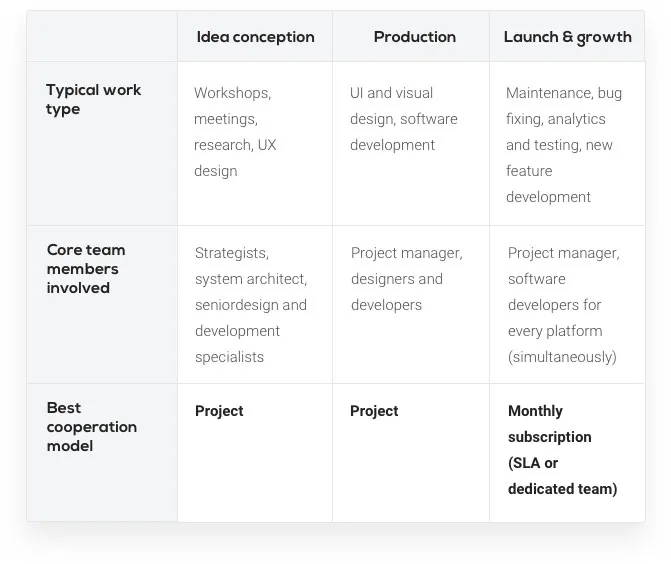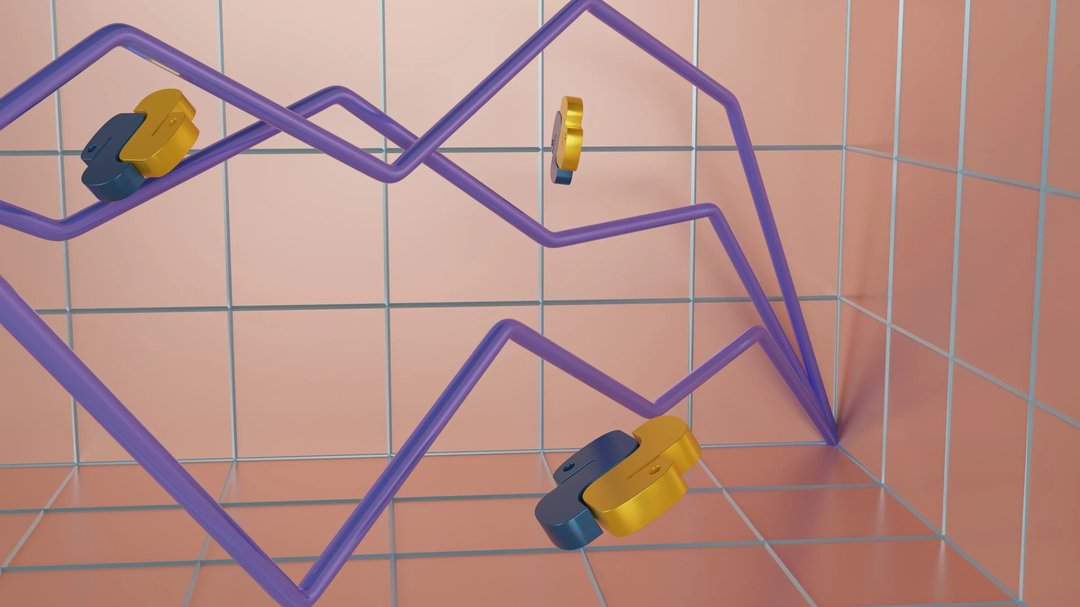
Kamil Sabatowski
2 March 2020, 6 min read

What's inside
Here's something everyone building a digital product should know: your product will require different kinds of support throughout its lifecycle. There's no denying that every product development process looks somewhat different, but you can be sure that it always follows the same lifecycle.
We can divide a typical product lifecycle into three major phases:
- idea conception,
- production,
- launch & growth.
Each stage sets different challenges to founders and teams responsible for bringing the product to life.
Here's everything you need to know about each of these stages to fully support them and build a fantastic product.
Note: This article was updated in March 2020.
Idea conception
Plan carefully, then execute rapidly
William G. Bowen, President of The Andrew W. Mellon Foundation
Careful planning is essential to successful project execution. When planning your product, you need to consider its entire context. What does this mean? That you should be thinking about how you're going to approach software development, but also developing your business model.
This process includes considerations about your Unique Selling Proposition (USP), monetization scheme, critical processes, and partners – as per the Business Model Canvas.
You also need to prepare a viable go-to-market strategy where you define the scope of your Minimum Viable Product (MVP). This is a good moment to think how you would like to test your app, gather customer insights, and grow traffic.
How to get all of this done?
- Do your homework and research everything from the market to customer profiles;
- Host workshops, brainstorming meetings, and Q&A sessions;
- Rely on the experience of people who know how to set up efficient plans (business strategists, system architects, senior designers, and founding partners);
- If you're starting from scratch, team up with a product design company that offers business strategy skills, not a software provider who will only code according to your specification. If you choose the latter, you risk developing a product that doesn't match any market needs, even if it's well-built. That's why it's a good idea to hire a team that complements your skills and provides you with a 360-degree expertise.
Production
Once your product idea is well-developed, you can proceed to hire a team for product design and development.
At Sunscrapers, we follow the agile methodology and break down the entire scope of the work into epics and user stories. That way, we can estimate the workload in advance and set the right priorities right from the start.
At this point, you also need to choose the scope of your MVP and decide which features are necessary for the MVP to provide value to the first users of your product.
When you're sure what kind of an MVP you want to build, an experienced software development company will create the best team for the project, and proceed with design and development. Working in iterations, the team will build on the MVP to arrive at your product vision.
Note that this phase requires some flexibility. For example, at Sunscrapers we like to involve various competencies when needed - ranging from UI design to web or mobile development, and testing capabilities. Bringing in all these different skills is critical for building a product that matches your design.
We also align the process to reflect business or stakeholder requirements, considering the speed of delivery vs. scope vs. product quality vs. cost.
Launch and growth
This is where the fun part starts. The requirements for this stage in the product development lifecycle are entirely different than during the previous phases. Unfortunately, it's easy for things to fall apart here because many software development companies shops aren't prepared to handle that stage and fail to educate their clients.
So, what exactly changes here? You basically open your product to the public.
Expect to receive feature requests not only from internal stakeholders but users. It may become more challenging to manage the backlog and set your priorities as you become afraid of losing the early adopters due to problems like poor UX or support.
Your platform is live now, so it needs constant monitoring. Emergencies like server outages require full responsiveness. You might uncover bugs or scenarios that may require your immediate attention. Don't panic: That's completely normal to any software development project.
Remember that each platform you choose (web, iOS, Android) will require support from a different specialist and all of them will need to provide that support on a continuous basis, not ad hoc like in previous stages in your product lifecycle.
As the project's founder, you're taking care of production, but also promotion, analytics, fundraising, and a million other tasks.
To learn more, read this article about product market launch.
How to deal with all of that and survive?
- Remember always to set aside a budget for maintenance and developing new features after launch.
- Consider hiring a dedicated team if you can't guarantee responsiveness and day-to-day availability.
- A dedicated team can devote a part of their time to maintenance and the other part of developing new features.
- Consider working with SLAs. They might come in handy at this point, but don't forget that they are usually the domain of large enterprises and their goal is to maintain a product, not scale it. SLAs aren't the best option for startups or innovative environments.
The takeaway

One of the most common mistakes I see founders commit over and over again is this:
They focus on production too much and forget about planning and supporting the product after the launch.
Likewise, many software development companies concentrate on the production phase and don't have the skillsets to help founders regarding strategy or the capacity to support scaling.
When looking for a company to create your software product, look for businesses that can support you with 360-degree services and become a real partner during the entire journey, not just the beginning.
- To learn more, read this article from our CEO, Lukasz: How a Strategic IT Partnership Differs From Traditional IT Outsourcing
Last but not least, always set aside a budget for maintenance and growth – don't forget that the production stage is only the beginning.
Do you have any questions about developing software products? Or perhaps you have some other tips up your sleeve?
Leave a comment and share your experience to help the community learn more about best industry practices for developing fantastic software products.


